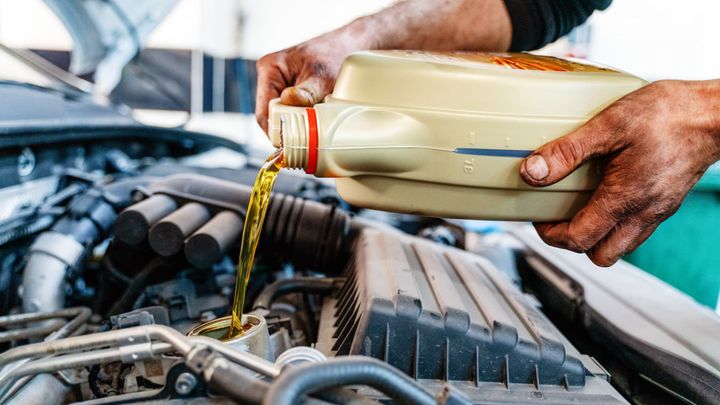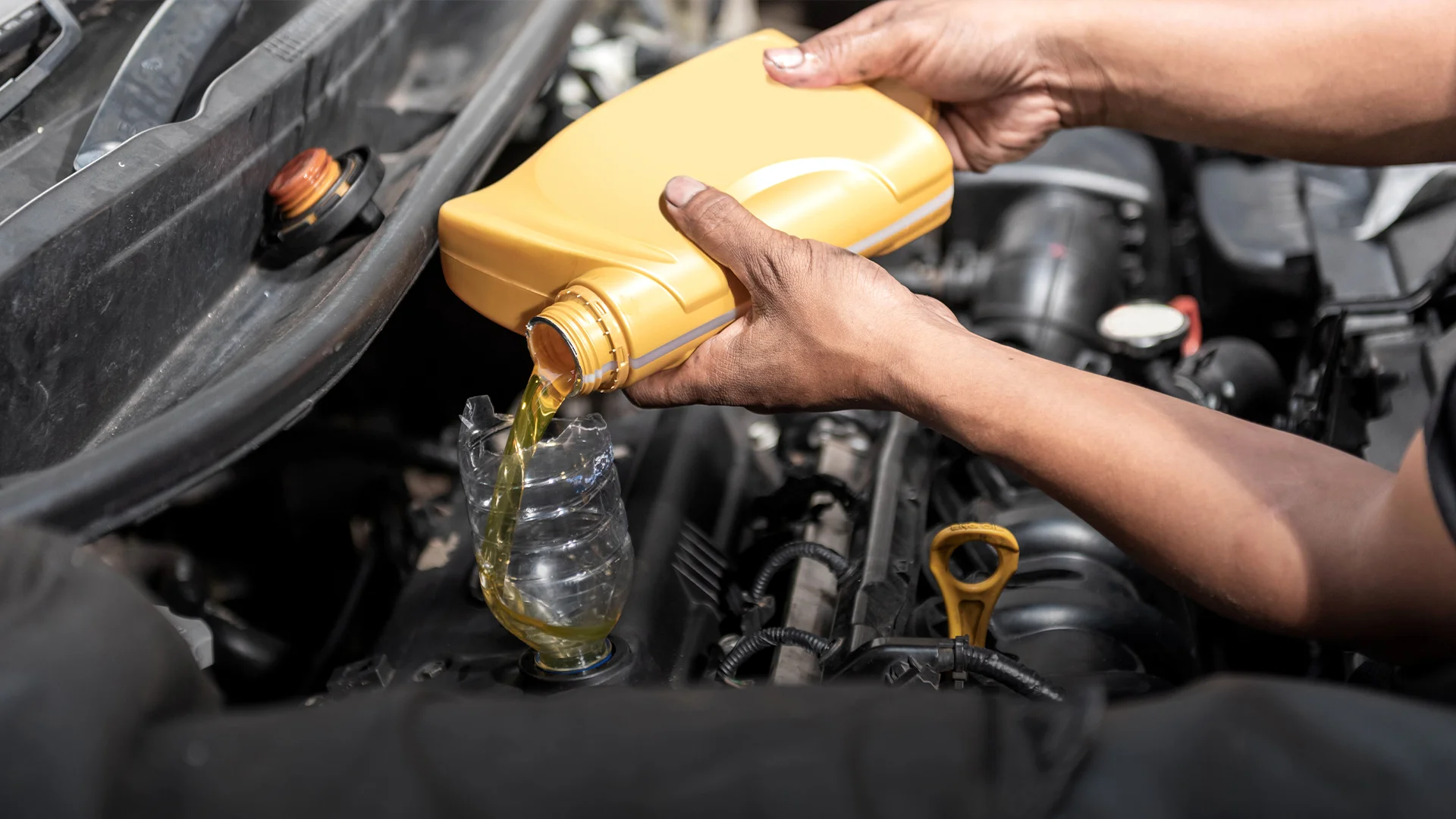


Transmission fluid is a vital component in the proper functioning of a vehicle's transmission system. It serves several purposes, including lubricating the moving parts, transferring power from the engine to the transmission, and acting as a hydraulic fluid to facilitate gear shifts. The color of the transmission fluid can provide valuable insights into the condition of the transmission and the fluid itself. While fresh transmission fluid is typically red or pinkish-red, a yellow tint can indicate various issues that require attention.

Before we explore the causes of yellow transmission fluid, let's briefly discuss the crucial role this liquid plays in your vehicle's transmission system. Transmission fluid acts as a lubricant, hydraulic fluid, and coolant, ensuring smooth gear shifts and protecting the intricate components within the transmission. Maintaining the proper fluid level and condition is essential to prevent premature wear and costly repairs.
Now, let's dive into the main culprits behind the dreaded yellow hue in your transmission fluid:
| Causes | Symptoms | Repair Procedures |
|---|---|---|
| - Faulty transmission cooler line | - Yellow or discolored fluid | 1. Locate and repair the coolant leak (cooler lines, radiator, transmission case) |
| - Radiator leak | - Foaming or bubbling fluid | 2. Drain and flush the entire transmission system |
| - Cracked transmission case | - Transmission slipping or erratic shifting | 3. Refill with new, manufacturer-approved transmission fluid |
One of the most common causes of yellow transmission fluid is coolant or water contamination. This can happen due to a faulty transmission cooler line, radiator leak, or cracked transmission case, allowing coolant to mix with the transmission fluid. When coolant mixes with the transmission fluid, it can cause discoloration, foaming, and even transmission failure if left unaddressed.
| Causes | Symptoms | Repair Procedures |
|---|---|---|
| - High mileage | - Yellowish-brown or dark yellow fluid | 1. Drain and flush the entire transmission system |
| - Excessive heat exposure | - Burnt odor | 2. Replace the transmission fluid and filter |
| - Faulty transmission cooler | - Transmission slipping or delayed engagement | 3. Inspect the transmission cooler and cooling system for any issues causing overheating |
Over time and with excessive heat, the red dye in transmission fluid can break down, causing it to turn yellowish-brown or dark yellow. This indicates that the fluid has oxidized and lost its protective properties due to overheating or extremely high mileage. Overheating can be caused by various factors, such as a faulty transmission cooler, towing heavy loads, or simply aging components.
| Causes | Symptoms | Repair Procedures |
|---|---|---|
| - Using engine oil or hydraulic fluid instead of transmission fluid | - Abnormal fluid color (yellow, brown, or milky) | 1. Drain and flush the entire transmission system |
| - Mixing different types of transmission fluids | - Transmission slipping or erratic shifting | 2. Refill with new, manufacturer-approved transmission fluid |
Using the incorrect type of fluid, such as engine oil or hydraulic fluid instead of the recommended transmission fluid, can cause the fluid to turn yellow or have an abnormal color. This is a common mistake made during DIY fluid changes or when the wrong fluid is accidentally added. Always refer to your vehicle's owner's manual for the correct fluid specifications. Mixing different types of transmission fluids can also lead to discoloration and potential transmission issues.
| Causes | Symptoms | Repair Procedures |
|---|---|---|
| - Worn clutches or bands | - Yellow or discolored fluid with metal particles | 1. Have the transmission inspected and diagnosed by a professional mechanic or transmission shop |
| - Damaged internal components | - Grinding or whining noises | 2. Repair or rebuild the transmission as needed, replacing any damaged internal components |
| - Transmission slipping or failure to engage gears | 3. Refill with new transmission fluid after repairs |
In some cases, yellow transmission fluid can be a sign of internal transmission component failure, such as worn clutches or bands. As these components wear down, metal particles can contaminate the fluid, causing discoloration and potentially leading to further damage if left unchecked. Other symptoms may include grinding or whining noises, transmission slipping, or failure to engage gears.
To properly diagnose the cause of yellow transmission fluid, I recommend following these steps:
Check the transmission fluid level and condition using the dipstick while the transmission is warm.
Note the color, smell (a burnt odor indicates overheating), and consistency (it should not be gritty or contain particles).
Inspect for any coolant leaks around the radiator, transmission cooler lines, or transmission case.
Check if the correct fluid type was used by comparing it to the owner's manual specifications.
If the fluid looks contaminated or discolored, drain a sample and have it analyzed by a professional mechanic or transmission shop.
Prevention is always better than cure, and when it comes to your transmission, taking proactive measures can save you from costly repairs down the line. Here are some tips to prevent transmission fluid discoloration and other issues:
Change the transmission fluid and filter according to the manufacturer's recommended intervals.
Regularly inspect for any coolant leaks and have them repaired promptly.
Use only the recommended transmission fluid type and never mix different fluids.
Avoid excessive towing, hauling, or high-load operation that can overheat the transmission.
Have the transmission cooling system inspected and maintained regularly.
The cost of addressing yellow transmission fluid can vary significantly depending on the underlying cause. Here's a rough estimate of what you might expect:

Coolant leak repair: $100 - $500 for minor leaks, higher for major repairs.
Transmission fluid flush: $100 - $200.
Transmission filter replacement: $50 - $150.
Transmission rebuild or replacement: $1,500 - $4,000 or more, depending on the vehicle.
While these costs may seem daunting, addressing the issue promptly can prevent more costly transmission repairs or replacement down the line. It's always recommended to have a professional mechanic diagnose and repair the problem to avoid further damage.
Yellow transmission fluid is a warning sign that should never be ignored. Whether it's caused by coolant contamination, oxidation, the wrong fluid, or internal transmission failure, prompt action is crucial to maintain the health and longevity of your vehicle's transmission system.
Remember, preventive maintenance is key. By following the manufacturer's recommended service intervals, using the correct fluids, and addressing any issues promptly, you can save yourself from the headache and expense of major transmission repairs.
So, the next time you notice a yellowish hue in your transmission fluid, don't panic. Instead, bring your trusty ride to a skilled mechanic, and together, we'll get to the bottom of the issue and keep your vehicle running smoothly for years to come.
Happy motoring, my friends!
Transmission fluid acts as a lubricant, hydraulic fluid, and coolant for the transmission system, ensuring smooth gear shifts and protecting internal components.
No, mixing different types of transmission fluids can cause discoloration and potential transmission issues. Always use the recommended fluid type specified by the manufacturer.
Follow the manufacturer's recommended intervals for changing the transmission fluid and filter, typically every 30,000 to 100,000 miles, depending on your vehicle.
Signs of coolant contamination include yellow or discolored fluid, foaming or bubbling fluid, and transmission slipping or erratic shifting.
Yes, over time and with excessive heat, the red dye in transmission fluid can break down, causing it to turn yellowish-brown or dark yellow due to oxidation.
Metal particles in the transmission fluid can indicate internal transmission component failure. Have the transmission inspected and diagnosed by a professional mechanic or transmission shop.
Yes, using the incorrect type of fluid, such as engine oil or hydraulic fluid instead of the recommended transmission fluid, can cause discoloration and potential transmission issues.
To prevent transmission fluid discoloration, change the fluid and filter according to the manufacturer's recommendations, use only the recommended fluid type, and have the transmission cooling system inspected and maintained regularly.
Costs can range from $100 to $500 for minor repairs, to $1,500 to $4,000 or more for a transmission rebuild or replacement, depending on the underlying cause and the vehicle.
It is generally not recommended to continue driving with yellow transmission fluid, as it can indicate a potential issue that may lead to further transmission damage if left unaddressed.

Sarah isn't your average gearhead. With a double major in Mechanical Engineering and Automotive Technology, she dived straight into the world of car repair. After 15 years of turning wrenches at dealerships and independent shops, Sarah joined MICDOT to share her expertise and passion for making cars run like new. Her in-depth knowledge and knack for explaining complex issues in simple terms make her a valuable asset to our team.












